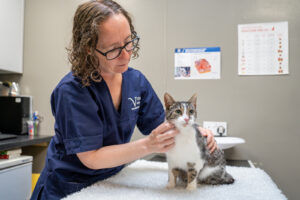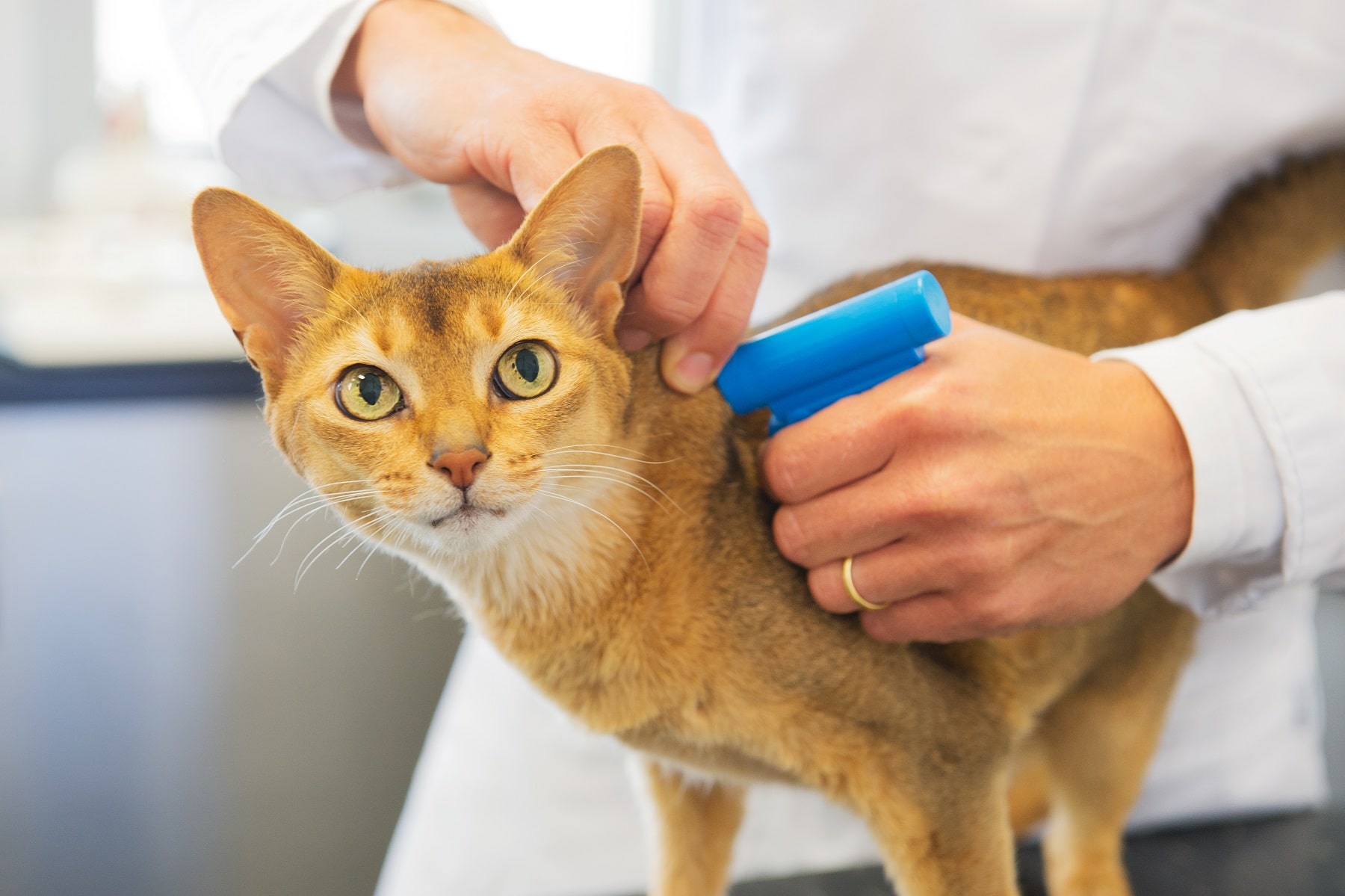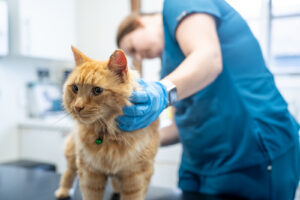Last Updated: 30/09/24
For many of us, our cats are family members, and it can be distressing if they become unwell or injure themselves.
It’s always sensible to have a plan in place should your cat require unanticipated treatment. One option is pet insurance which can offer a potential solution, but your vet is always here to help you no matter what your situation.
There are lots of policies available, from simply ‘accident only’ cover to lifetime policies. ‘Cover for life’ policies tend to offer the most comprehensive cover.
Choose your policy carefully, read the small print and check whether the policy imposes a premium increase after a claim has been made.
On this page:
- Should I just put some money aside each month?
- Is pet insurance worth it?
- What species can be insured?
- What types of insurance policies are available?
- What is an excess?
- What sort of things are covered by cat insurance?
- What doesn’t pet insurance cover?
- Before committing to a pet insurance policy make sure you know these things
- What factors can affect the cost of your cat’s pet insurance?
- Can I insure an older cat?
- What if my cat has a pre-existing condition?
- Can I change from one policy to another?
Should I just put some money aside each month?
Some owners choose to put aside some money each month for unexpected costs rather than taking out an insurance policy (this is basically self-insuring).
This takes ongoing commitment, and often takes time to grow to a level where significant costs can be covered.
Considering this practically, young animals like kittens can be accident prone, and if they fracture a leg, you may find your savings haven’t yet grown to a size where you can cover the costs of treatment.

Similarly, if an elderly cats gets an ongoing condition, funds can sometimes be depleted quicker than they can be replaced.
It is therefore important to fully consider all eventualities and whether taking out a pet insurance policy for your cat or kitten might be a safer option.
Is pet insurance worth it?
Whilst we all hope our cats will remain healthy and well, many of us have no idea of the costs involved in managing certain health conditions and this can come as a shock!
We all want the best for our cats, and provision of specialist care, hospitalisation and treatment may cost hundreds or even thousands of pounds.
Veterinary costs
For example, a diabetic patient could cost around £2,000 for hospitalisation and initial stabilisation with significant ongoing costs.
Similarly, referral to a specialist orthopaedic surgeon to fix a fracture could easily cost £4,000.
Pet insurance can reduce our stress in these situations, by giving us the knowledge that these costs can be met and that we are able to access the full array of treatment options.
When deciding whether to take out pet insurance for your cat or kitten, the best place to start is assessing whether you would be able to fully cover unexpected veterinary costs if they arose.
Veterinary Nurse Hollie (RVN) says:
Pet insurance covers veterinary fees if your cat becomes ill or injured. It can provide you with peace of mind for any unexpected bills! Be sure to research before purchasing a policy to make sure it is the right one for you and your cat.
What species can be insured?
Whilst it is more common to insure cats, dogs and rabbits, a variety of different species can be insured, and it is always worth exploring the options available and whether or not they are likely to be cost effective.
What types of insurance policies are available?
There are many different types of policy available, and many will vary. However, the main different types of policy are outlined below:
Accident only policies
These cover accidents but not illnesses, and are often the cheapest type of cover to take out.
Time limited policies
Cover both accidents and illnesses, but each problem will only be covered for a fixed period.
Maximum benefit policies
Cover both accidents and illnesses for an unlimited period, but set a maximum total amount you can claim for each.
Lifetime or cover for life policies
These provide the highest level of protection available and cover accidents and illnesses for your cat’s lifetime (subject to any restrictions).
Read the small print carefully, as there may be a financial limit either in total, per year or per condition.
Also, check whether it’s the insurance company’s policy to increase their fees (premiums) after a claim has been made.
Did you know? Many insurance policies will not cover any illnesses which occur in the first 14 days of the policy being taken out. All policies are different, but it is good to be aware of this – always read the small print!
What is an excess?
The term ‘excess’ refers to the amount of money you are expected to pay yourself when you make an insurance claim.
When taking out a pet insurance policy for your cat, it is important to check what sort of excess applies. Some excesses will involve a fixed charge per insurance claim made, others will be worked out as a percentage of the claim being made (and some can have both).
There can be a considerable price difference between these options, so it’s important you know the ins and outs of the policy you are taking out.
What sort of things are covered by cat insurance?
The specific costs covered by pet insurance will vary between policies, but examples of the possible costs covered include:
- Veterinary fees (not including routine treatments)
- Other supportive care (e.g. physiotherapy, hydrotherapy and acupuncture)
- Care for behavioural problems
- The costs involved in loss or theft of your cat (e.g. advertising fees)
- Boarding fees (e.g. if you are hospitalised)
- A refund of your cat’s purchase price if they sadly die (this is usually age limited)
What doesn’t pet insurance cover?
Again, this will vary between insurance providers and policies, but most will not cover routine vet fees (e.g. vaccines and neutering), pre-existing conditions, cosmetic procedures, illnesses that could have been prevented by vaccinations and veterinary fees while on holiday abroad.
It is important to note that not all policies will cover dental treatment (although some will meet the costs of certain dental procedures if regular dental checks have been carried out).
Some policies will also stipulate the need for cats to be seen by a vet for regular health checks and be fully vaccinated (the costs of this are not covered by the policy, but the policy may be invalid if these criteria are not met).

Thoroughly research the different insurance policies available, and find the one that is best tailored to you and your cat’s individual needs.
Always read the small print and query anything you aren’t sure about before committing to a policy.
Before committing to a pet insurance policy make sure you know:
- What you are eligible to claim for.
- The maximum cost the policy will cover and for how long. For example, is it:
- Per year, but for all conditions?
- Per condition, per year (or other fixed time period)?
- Per condition, with no time limit?
- What restrictions, if any, apply
- Whether the policy will be subject to any change as your cat gets older
- Whether the premiums will increase with each claim
What factors can affect the cost of your cat’s pet insurance?
Several factors can affect the cost of pet insurance, including the age and breed of your cat, the level of cover you are taking out and the area you live in.

Can I insure an older cat?
It is possible to take out an insurance policy for an older cat, although some providers do have age limits to taking out a new policy.
You may also find that the cost of a policy is more expensive for an older cat and that the excess is also higher.
Any existing health conditions your cat or kitten has are also unlikely to be covered.
Take time to compare policies and carefully read the small print.
What if my cat has a pre-existing condition?
You can still take out insurance for your cat, even if they have a pre-existing health condition, however any existing health issues need to be declared and will likely be excluded on the policy.
Not notifying the insurance company of any pre-existing health issues can invalidate your policy.
Some companies will re-include a condition after a specific length of time (set by them) has passed without the condition recurring.
Can I change from one policy to another?
It is often possible to do this, however if your cat or kitten has an ongoing health issue or you have made claims on your existing policy, you may find that other insurers will only offer policies which exclude pre-existing problems or conditions you have already claimed for.
If you are unsure of the potential costs of veterinary treatment or would like more information about pet insurance, then please reach out to your local veterinary practice for further advice.

